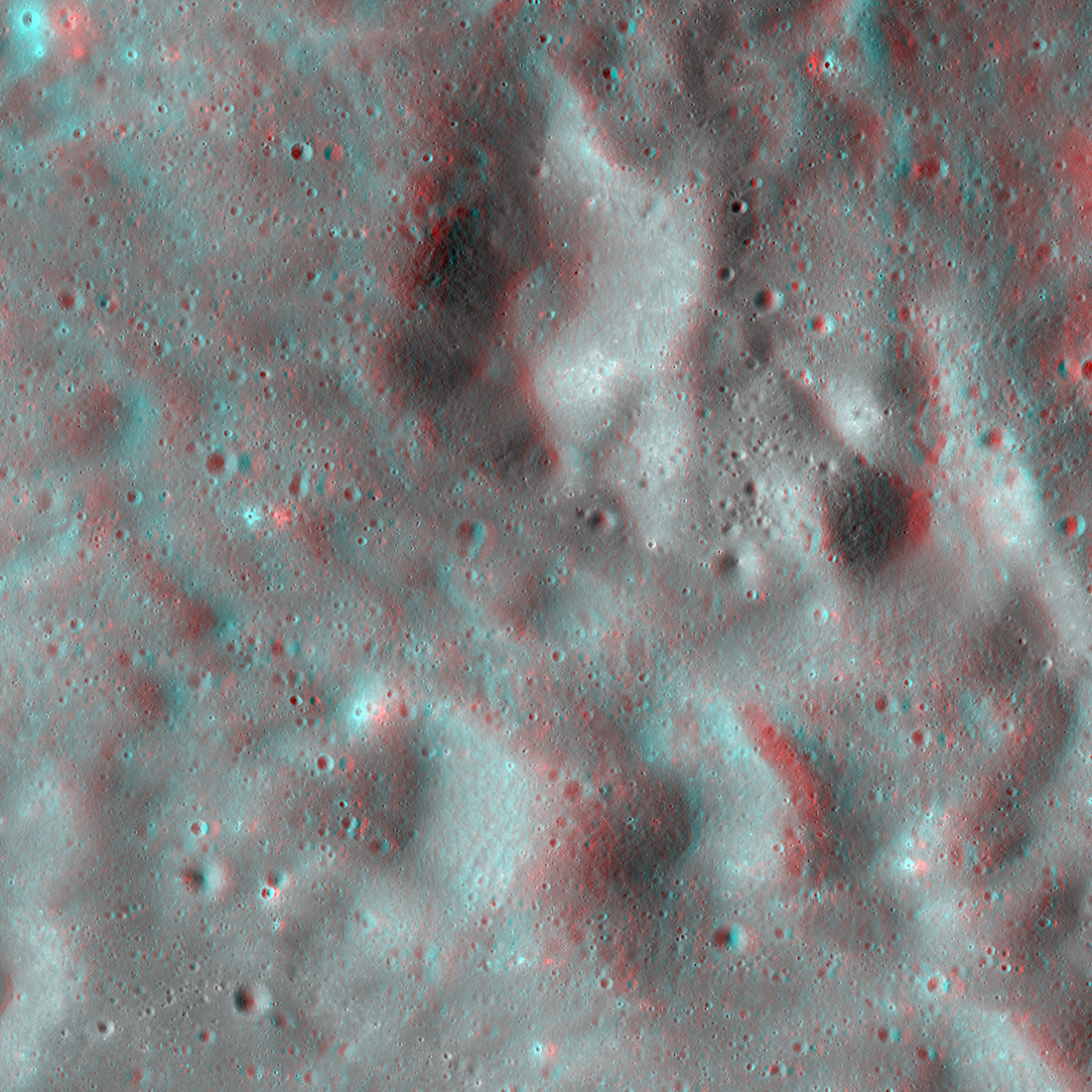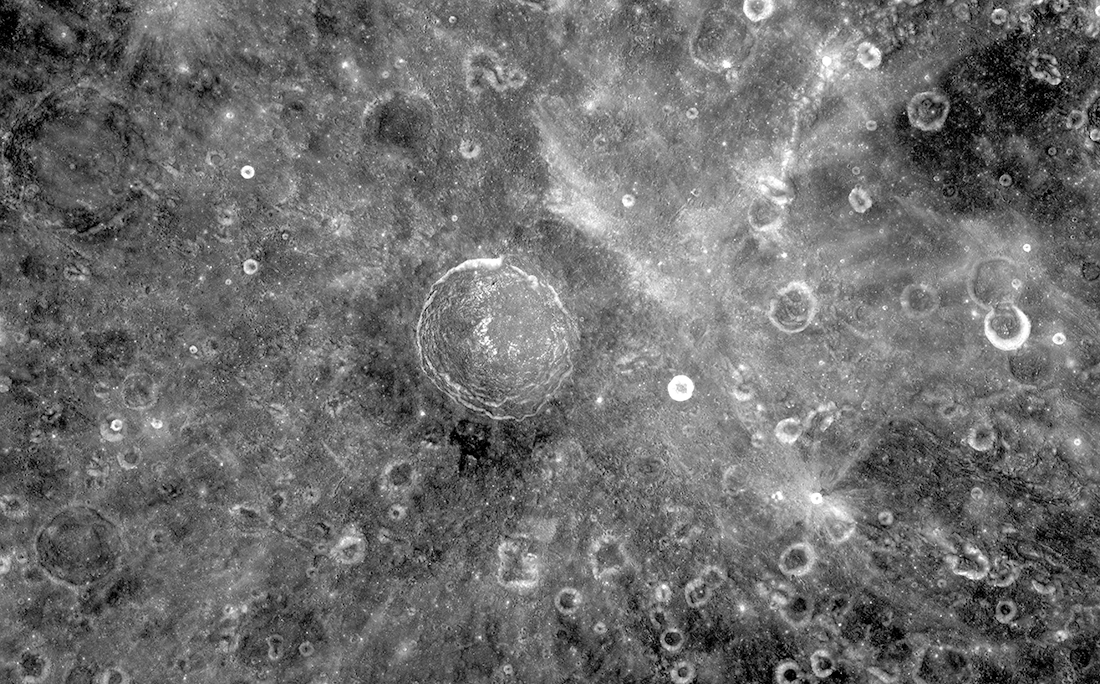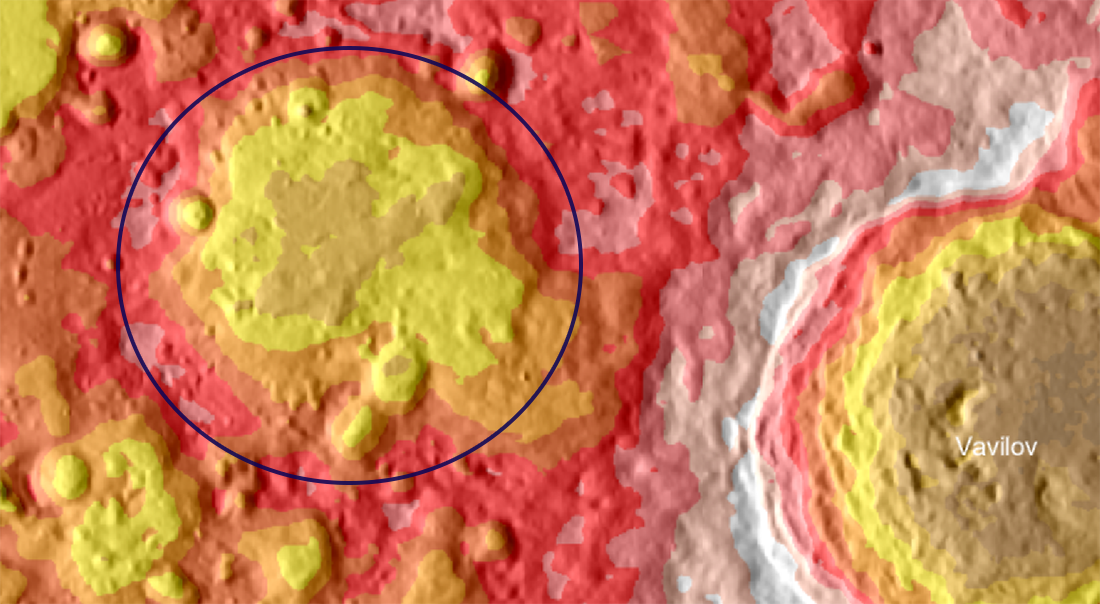
Vavilov crater is a large crater roughly 100 km in diameter and is relatively young and well-preserved. The crater is located in the farside highlands near the equator (view in Quickmap). Vavilov crater is remarkable because of a distinct low-albedo ring around the crater that is thought to result from a high abundance of impact melt in its ejecta. Vavilov is one of several large craters that exhibit a similar low-albedo ring or partial rings just outside the crater rim (including Tycho, Ohm, Jackson, and King craters).

Rocks and debris flung outward during Vavilov's formation impacted the ground at relatively low angles and velocities. The secondary craters shown in the 3-D anaglyph image above were formed when ejecta intersected an elevated bit of terrain. This raised massif is part of the degraded rim of an ancient, highly eroded crater that is itself about 75 km in diameter (see image below). The featured secondary craters are about 2 to 2.5 km in diameter, or about 2 to 2.5% of the primary (Vavilov) crater's diameter, and are located about 100 km from the rim of Vavilov (or 1 crater diameter). They are very typical of the sizes and morphologies of secondary craters found at these distances.


Explore this area in Quickmap, or read more about Vavilov crater and its ejecta in this earlier post: Old and New
Zoom in and out on the entire NAC anaglyph featuring Vavilov's secondary craters:
Related Featured Images:
Cluster of Farside Secondary Craters
NAC Anaglyph: Secondary crater in Mare Australe
Secondaries near Mare Moscoviense
Published by J. Stopar on 28 May 2020